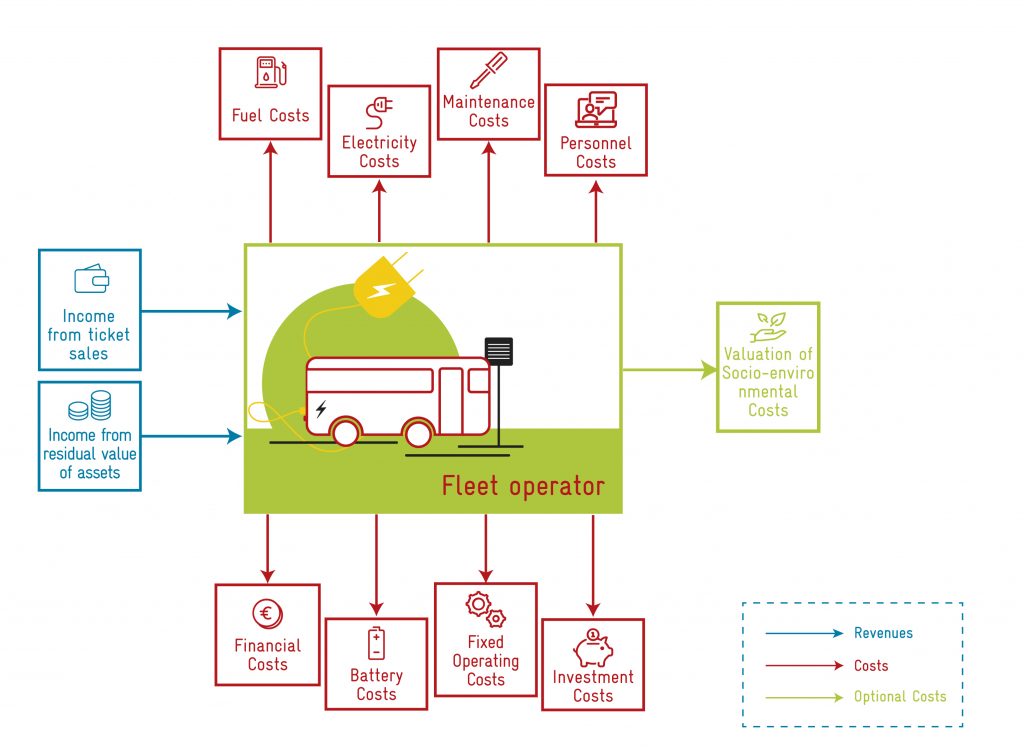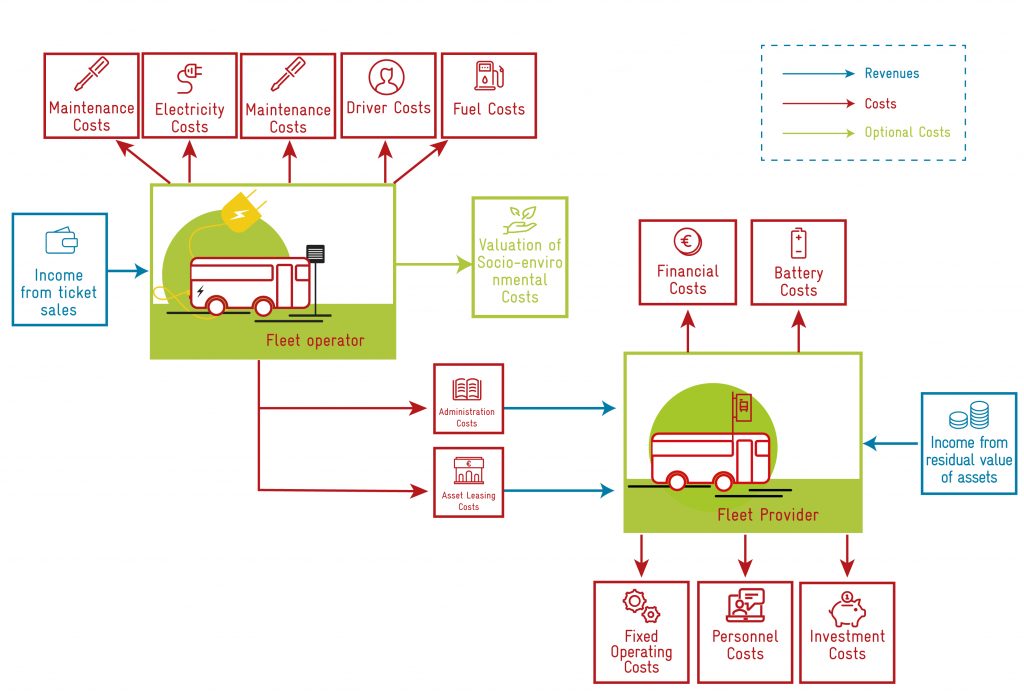
The electrification of public fleets has been a key strategy among cities and countries to reduce transport emissions and improve public transport systems through silent, modern, and climate-friendly buses. Policies to promote electric vehicles are the most common transport mitigation measure, mentioned in 21 of the new generation NDCs (Tracker of Climate Strategies for Transport, 2021).
But the achievement of these goals and the feasibility for implementing electric mobility in public transport require sustainable systems also form an economic and financial perspective.
In this sense, the Moving Chile project has developed a new tool that allows users to perform economic and financial evaluations to quantify the private and social benefits and costs of electromobility in urban passenger transport buses.
The main objective of the tool is to inform decision-makers and potential investors about the cost structure and possible monetary and environmental benefits of technological change. In addition, it allows comparing costs, economic indicators, and emission reductions of buses or bus fleets for different types and technologies.
The tool has been designed flexibly to evaluate the different realities of public transport around the world by introducing new data and parameters to evaluate according to each system.
Donwnolad the E-bus global tool here
The tool was built around two financing mechanism models:
Model 1
The Traditional Mechanism considers the participation of a single player that acts as an investor, owner of the assets, and fleet operator. All economic flows fall upon this player.

Model 2
The Leasing Mechanism contemplates the participation of two players: a fleet provider and a fleet operator. The fleet provider makes the investments and owns the assets. Meanwhile, the fleet operator is responsible for the operation of the buses, the collection, and of assuming the main operation and maintenance costs. There is a contractual relationship between the parties and a flow of payments associated with the leasing of assets.

The tool provides comparisons, total cost of ownership and externalities with an electric fleet, and a EURO V or EURO VI technology for both financing mechanism structures.
The tool will be launched during the Transport and Climate Change Week 2021, and is now available in Spanish, and soon will be updated to English and French.
For further information regarding the tool, you can contact Corinna Winter corinna.winter@giz.de or Cristian Tolvett cristian.tolvett@giz.de
 Artem Sapegin for Unsplash
Artem Sapegin for Unsplash
Macarena Castillo